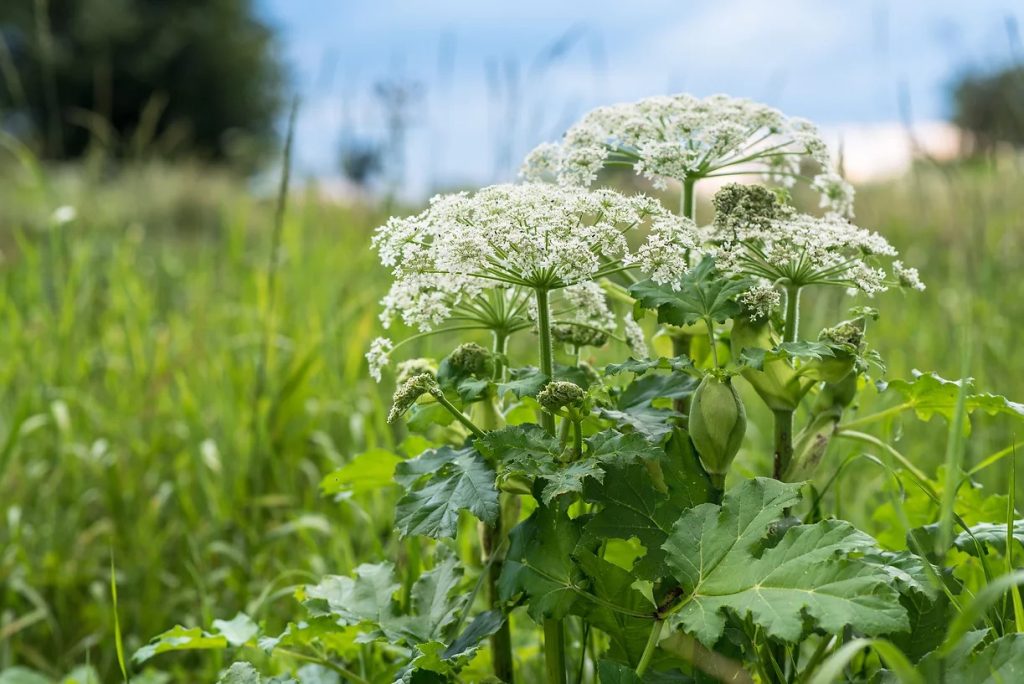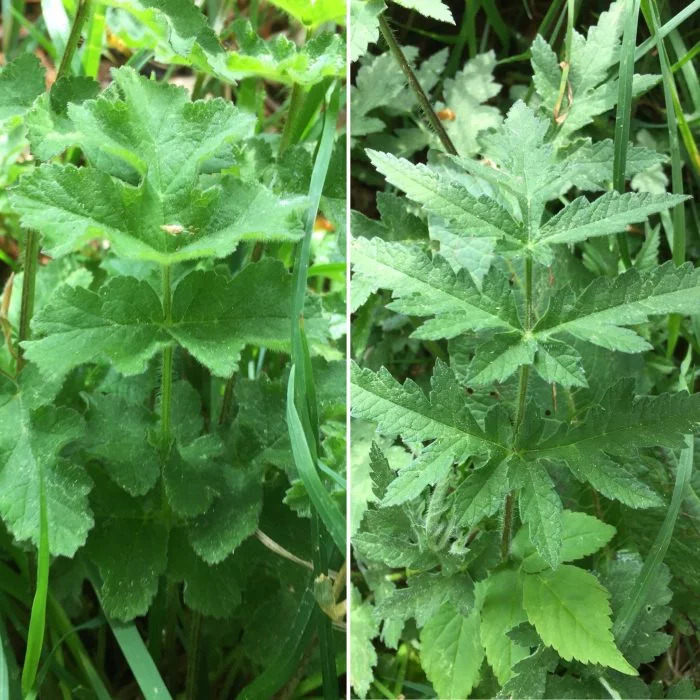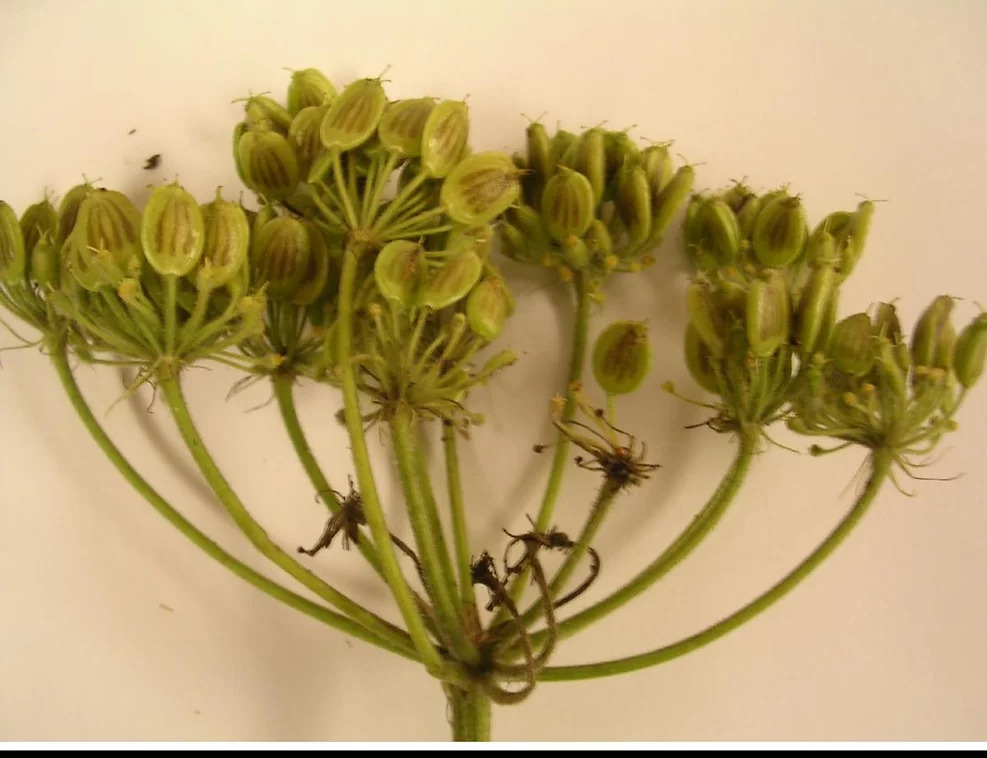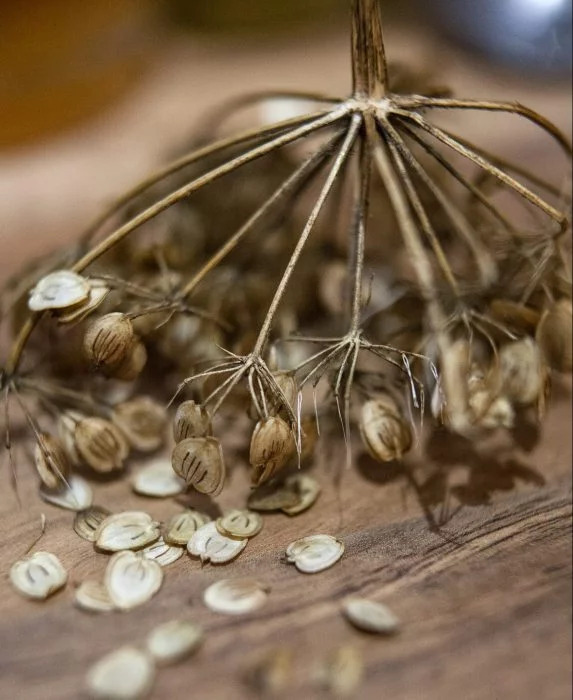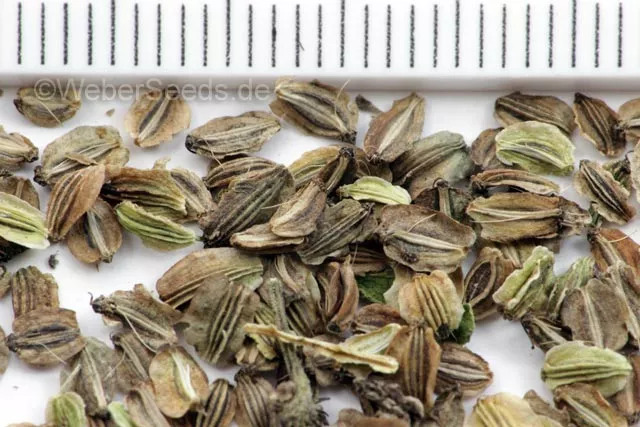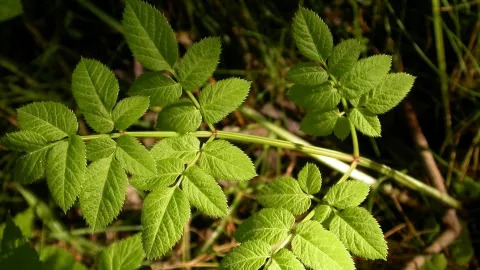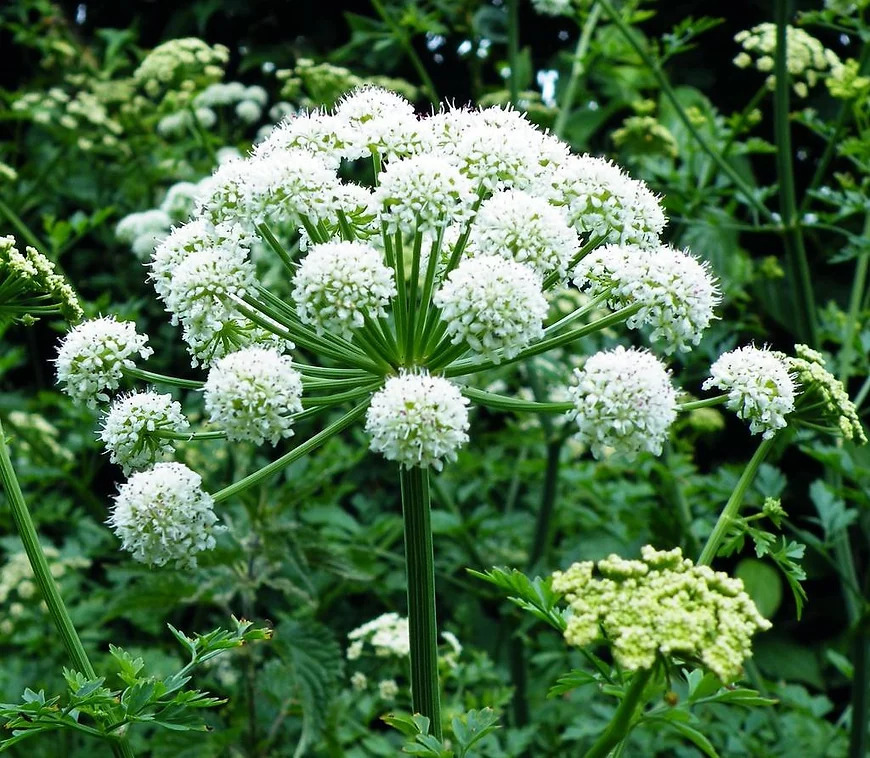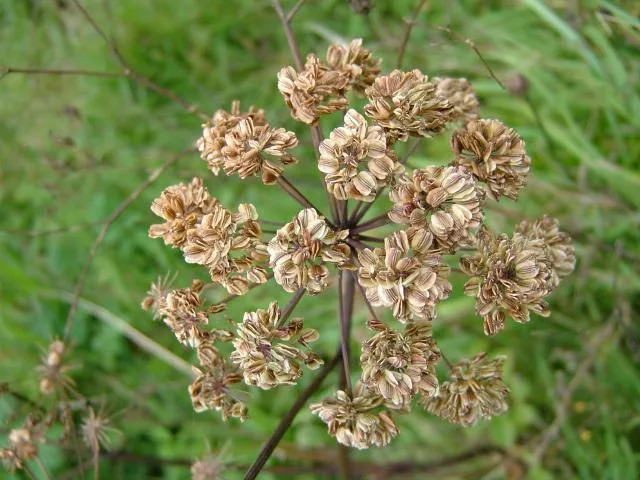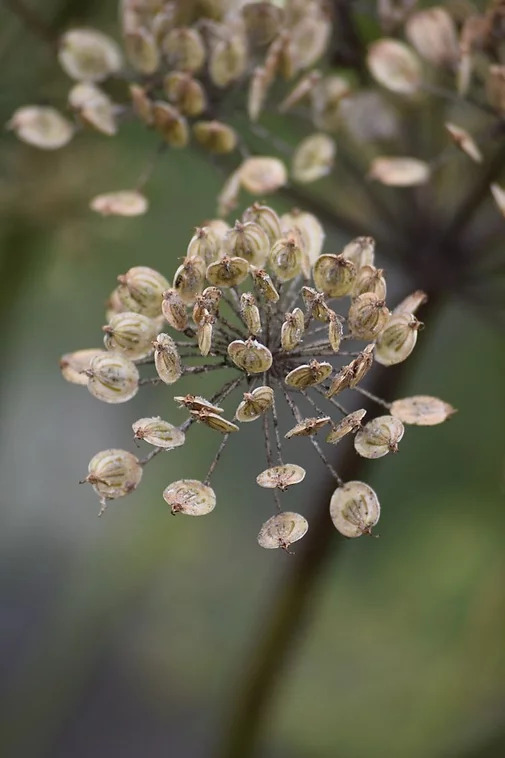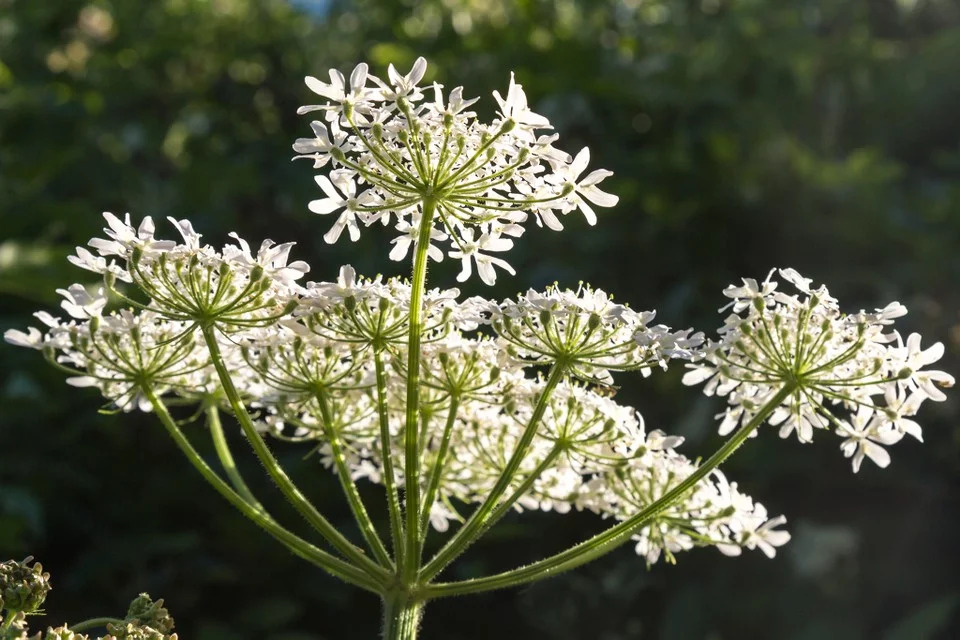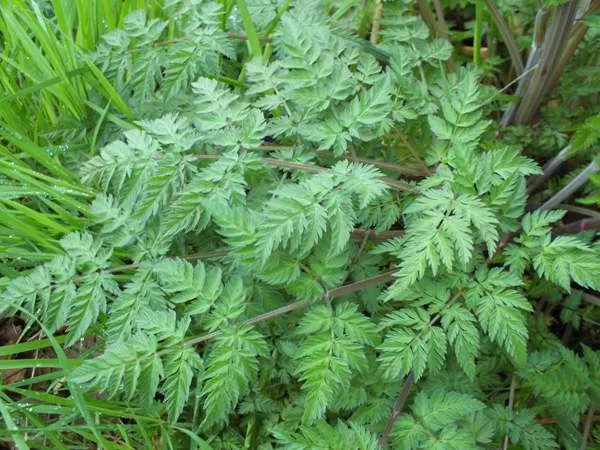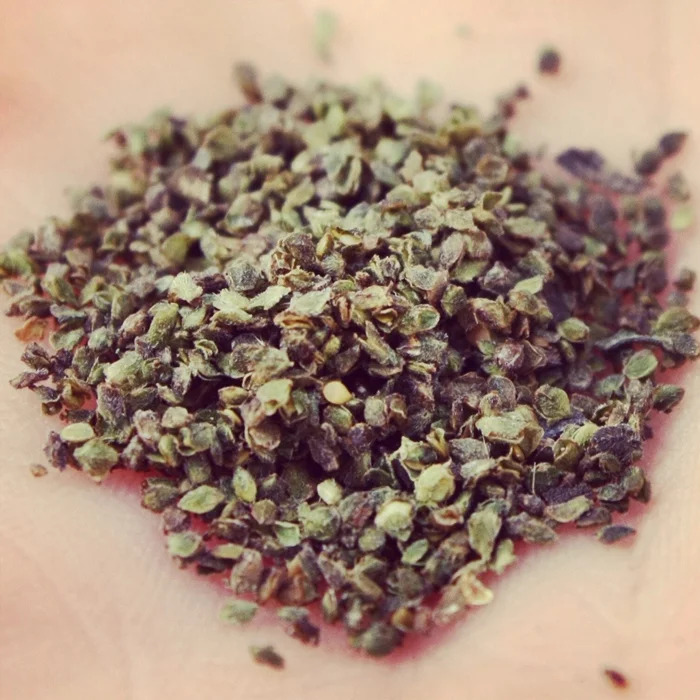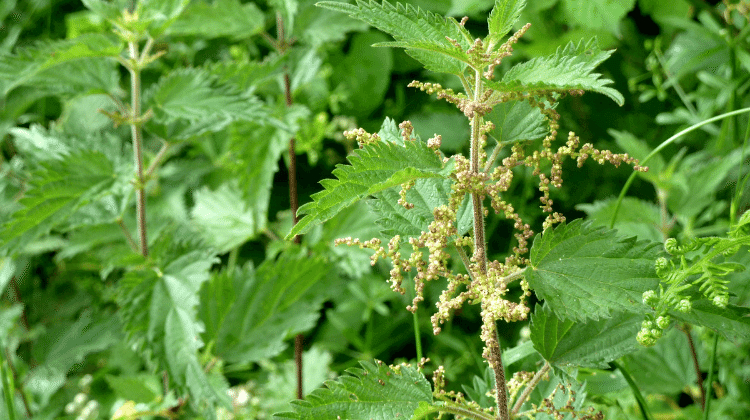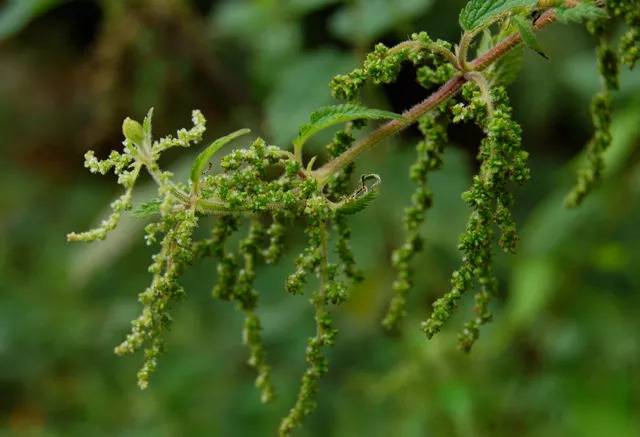Seed collection introduction
The creation of Early and Late Cover areas as part of the project is due to start soon. As part of our conservation measures for Corncrake, we will be sowing diverse strips of native wildflower seeds in autumn. These will be established across all sites involved within the project areas and will provide crucial habitats for the corncrake.
Common hogweed, Wild Angelica, Cow Parsley, Meadowsweet and Common nettle are the perfect examples of ideal native sheltering plants for the corncrake. Their height and leaves create a structured cover that protects corncrakes from the rain and predators. Additionally, the wildflower diversity contributes to a higher invertebrate population, which is the corncrake’s main food source.
A vast amount of seeds are needed and local plant clusters would not provide enough seeds to cover the large geographical area of the project. However, these native plant species are very common and can be found widespread across Ireland. We are looking forward to working together as a meitheal and collect the necessary amount of seeds from the wild to ensure enough Early-Late cover is established.
Everyone can actively contribute to this seed collection, no matter where you live. It can be done on your own or you can get your community/family/friends involved too. You can organise an event in your community to look for clusters of these species around your area or you could also contribute on your own by collecting seeds during your daily walk. Seed collected close to the project areas is preferred, but so long as we know where the seed is coming from we can ensure that the outcome of its sowing is monitored.
If you want to be an active part of the conservation of corncrakes, you can find further information below about how to collect seeds, plant identification, storage and sending requirements. Filling an A4 –sized envelope with seeds makes the most valuable contribution to our efforts. We also invite you to add your contact details when sending your seeds. We would be delighted to include everyone, who contributed to this seed collection, to our annual newsletter and publicly acknowledge your vital work in this meitheal.
Storing and sending:
Once seeds are dry and ready, they can be stored in an airtight container or bag. Brown paper bags are best as they allow the seeds to remain dry and not go mouldy. Ensure the seed will be dry and cool when stored and sent by post. Adding some dry silica sachets can help to keep seeds dry. Remember to add the labels to the seed bags with the following information:
- Plant species
- Location: Local area, county
- Collection date
- Collector’s name
- Collector’s email address (This will allow us keep you updated with the project through our annual newsletter)
A minimum of 500g per box is required before sending your seeds to the project’s office at the following address:
Corncrake LIFE Project,
Ballinafad via Boyle,
Co. Sligo,
F52 K752
For more information about how to collect, dry and store seeds, check the “How-to-guide: Collecting and using pollinator friendly wildflower seed” from the National Biodiversity Data Centre.
Before you start:
1. Find your target populations
Most plants are easier to identify during their flowering season. Umbelifiers especially become more visible when they grow to their maximum height in summer. The eye catching flowers help to recognize target plant-populations you could collect seed from later on in the year. Keeping a record of these populations early in the summer makes seed collection afterwards easier and more productive.
2. Assess the readiness of the seeds
Due to a long-flowering time frame, seed production will differ from a few days to weeks between plant-populations. Once you have identified the plant-populations you want to collect seeds from, it is helpful to anticipate when each population might start seeding. This usually takes place 6 to 8 weeks after flowering and only happens once the flowers have been pollinated.
3. Avoid over collecting from one population
Remember seeds are an essential food source for wildlife. Leaving enough seeds will ensure that wildlife has still a food source this year and that there will also be a healthy wild plant-population next year. When you visit your target population, you are likely to find seeds that are at different stages: some still green, some that are ready to collect and others that have already dispersed. The recommended code of conduct is to collect when most of the seed heads are ready and to only collect one in five seed heads.
4. Seed storage while you collect them matters
As you collect seeds, store them into paper or cloth bags. Buckets and baskets can also be used so that seeds can breathe. Avoid keeping them under direct sunlight or in extremely hot places. Collect them directly from the plants.
5. Keep each species separated
Before going out collecting seeds, make sure you pack enough bags for each species. It is always a good idea to bring extra bags with you in case a bag brakes or there is any other issue. Naming the bags will help you remember what you collected in each bag. You can use the method that you prefer for this: writing the specie’s name on the bag, putting a name tag in the bag….But remember, the use of pencil is recommended when you are outdoors. Anything written by pencil will not blur under the rain.
Adding species name tags to the seeds is a crucial part for the project. This will allow the project to collect seeds more effectively and to create seed mixes with the correct species ratios.
| Wildflower | Where To Find | Flowering | When to Collect Seed | Notes |
|---|---|---|---|---|
| Hogweed | Meadows, hedgerows and grassy places | June – September | August onwards | Not to be mistaken with Giant hogweed |
| Wild Angelica | Riverbanks; damp meadows, grasslands and woods | July – September | September – October | Flower umbel is domed |
| Cow Parsley | Hedgerows, wood margins, field edges | April – June | June-July | Seeds are the earliest to be ready for collection |
| Meadowsweet | Damp meadows and woods, stream-banks, wet ditches | June – September | August onwards | Seeds are shaken from stems when dry and ripe |
| Common nettle | Margins of arable fields, field edges | May – September | August onwards | Collect when seeds dark green, not black |
How to collect
Common hogweed (Heracleum sphondylium L.)
Green seed casings will appear at the end of summer and will naturally dry on the plant. Each flower umbel can hold several hundred of seeds. These become brown and flattened, with papery texture, when dry.
When seeds are dried, they can be directly collected by shaking the flower head into a bag. Sometimes umbels might not be completely dried by the time we plan to collect them. In this case, whole flower umbels can be cut and collected.
Precaution is necessary when handling common hogweed plants. Hogweed sap can cause phytophotodermatitis when it gets in contact with skin. Although, most hogweed plants will be dry by the time of collection, the use of gloves is advised when harvesting seeds.
Not to be mistaken with Giant hogweed (Heracleum mantegazzianum).
Meadow sweet (Filipendula ulmaria)
When seeds are ripe, the whole fruiting stem can be shaken into a paper bag. Likewise, the whole stem can be cut and collected. In this case, the stem can be rubbed between the hands over a bag or some newspaper to remove the seeds. Seeds can also be separated by placing the flowering stems in a large lidded container and shaking the container.
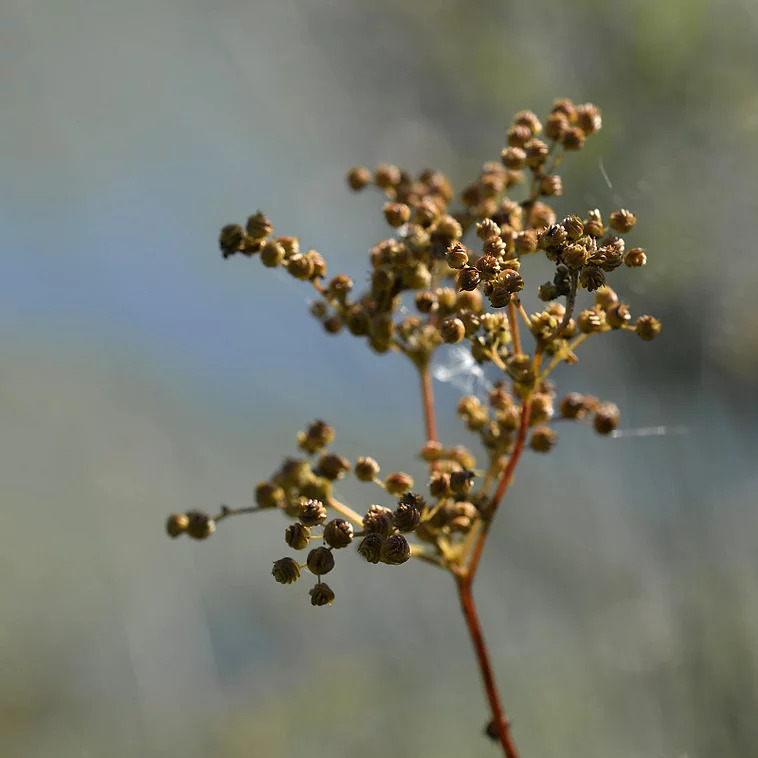
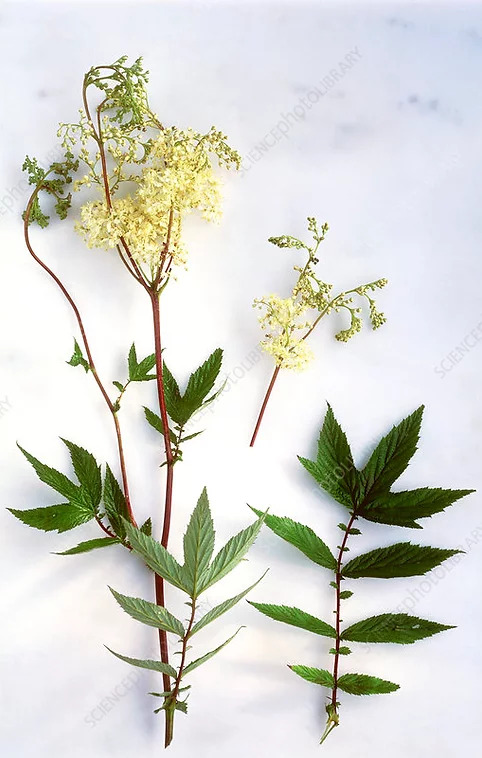
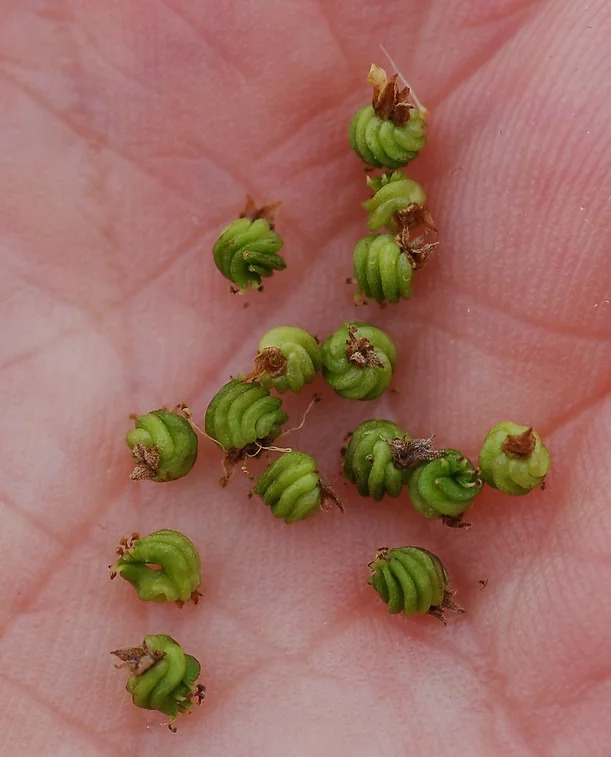
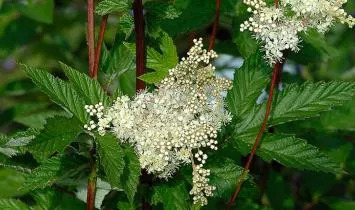
Common nettle (Urtica dioica L.)
The use of gloves is necessary at all steps. Although seeds do not sting, stingy hairs might have fallen on them and make them stingy.
Nettle flowers can often be confused with seeds. Male nettles produce flower clusters. This are round and are found in scattered clusters. These flowers do not turn into seed. Instead, they produce pollen to fertilise seeds on female plants. Seeds, on the other hand, are slightly pointed and clusters are more compact.
Nettle seeds can be directly pulled by hand when ready and stored in a bag. They can also be collected from the seeding stalks by placing the hand around the bottom of the seeding stalk and pulling everything up. This second method will require a longer cleaning process afterwards, as the seed will need to be separated from the leaves.
Similarly, seeding stalks can be cut and collected. This can be dried by hanging them upside down from a string. Seeds can be collected when stalks are dry.
Click here for a step–wise guide to harvesting nettle rhizomes.
See video for another example of how to collect nettle seeds.

